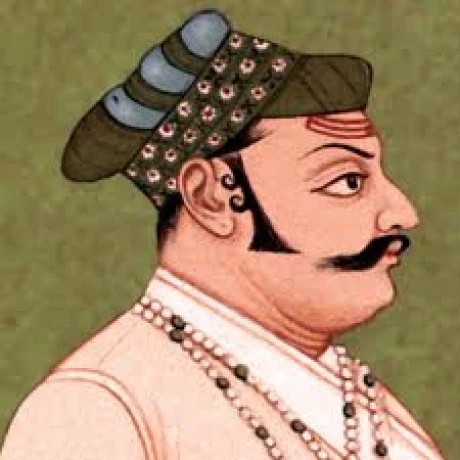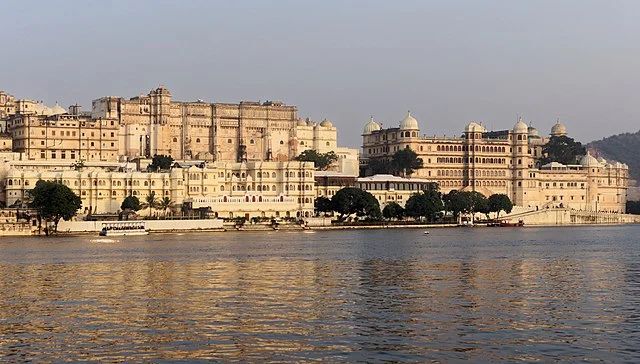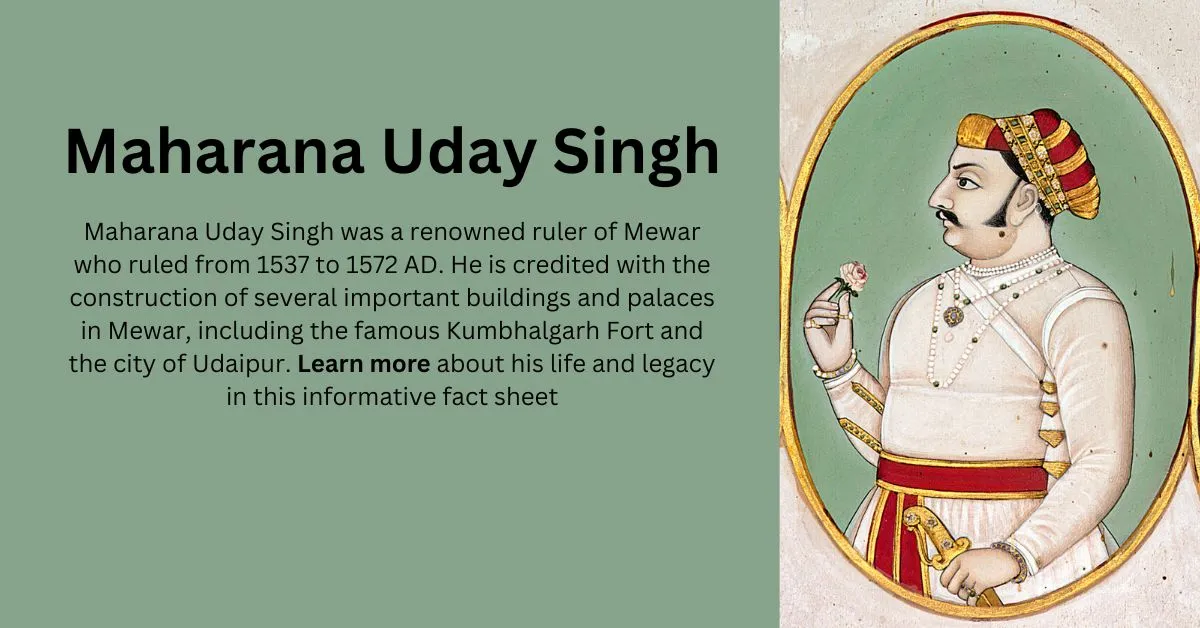Maharana Uday Singh was a renowned ruler of Mewar who ruled from 1537 to 1572 AD. He is credited with the construction of several important buildings and palaces in Mewar, including the famous Kumbhalgarh Fort and the city of Udaipur. Learn more about his life and legacy in this informative fact sheet.

Introduction
In the early 16th century, the Mewar region of India was in turmoil. The Delhi Sultanate and the Mughal Empire were expanding their territories and warring with the Rajput kingdoms, including Mewar. It was in this turbulent period that Maharana Uday Singh came to power, becoming the 33rd ruler of the Sisodia dynasty in 1537.
Maharana Uday Singh was born to Rana Sanga and Rani Karnavati, who was herself a warrior queen. From a young age, Uday Singh showed promise as a leader and was trained in the art of warfare and statecraft. When his father passed away, Uday Singh ascended to the throne of Mewar at the age of 17.
Under Uday Singh’s leadership, Mewar experienced a period of stability and prosperity. He expanded the kingdom’s territories, annexing nearby territories and defeating his enemies in battle. He also focused on strengthening Mewar’s infrastructure, building new forts and renovating old ones. One of his greatest achievements was the construction of the beautiful and impregnable Chittorgarh Fort, which still stands as a testament to his vision and skill.
However, Maharana’s reign was not without challenges. He faced constant threats from the Mughal Empire and had to navigate complex alliances with neighboring Rajput kingdoms. In 1567, the Mughal Emperor Akbar led a massive army to besiege Chittorgarh, and Uday Singh led his troops in a valiant defense of the fort. Though Mewar ultimately lost the battle, Uday Singh’s bravery and leadership in the face of overwhelming odds earned him widespread respect and admiration.
Maharana passed away in 1572, leaving behind a legacy as one of the most revered and respected rulers in the history of Mewar. His contributions to the kingdom’s military, cultural, and architectural heritage are still celebrated to this day, and his story continues to inspire generations of Indians.
Battle of Mavli (Udaipur) (1540 AD) Maharana Uday Singh vs Banveer
In the year 1540, Maharana Uday Singh of Mewar faced a significant challenge to his rule in the form of Banveer, a powerful chieftain who had ambitions of seizing control of the region. Banveer had previously served as a general in Uday Singh’s army, but had grown resentful of the Maharana’s authority and decided to rebel against him.
The two forces clashed in a fierce battle at Mavli, a town located near the city of Udaipur. Banveer’s army was larger and better equipped, but Uday Singh was a seasoned warrior and had the loyalty of his troops. The battle raged on for several hours, with both sides suffering heavy casualties.
At a critical moment in the battle, Uday Singh noticed that Banveer’s horse had been killed and he was fighting on foot. Seeing an opportunity, Uday Singh rode towards him, and the two engaged in a fierce duel. Banveer was a skilled fighter, but Uday Singh’s superior swordsmanship and agility eventually gave him the upper hand. He dealt a fatal blow to Banveer, killing him on the spot.
With their leader dead, Banveer’s army began to crumble. Uday Singh’s forces took advantage of the chaos and launched a final assault, routing the enemy and securing a decisive victory. The Battle of Mavli was a major turning point in Uday Singh’s reign, cementing his authority over Mewar and establishing him as a formidable leader in the region.
The aftermath of the battle was not without its challenges, however. Banveer’s supporters and allies continued to pose a threat to Uday Singh’s rule, and he had to remain vigilant and assertive to maintain his grip on power. Nonetheless, the Battle of Mavli had demonstrated Uday Singh’s courage and military prowess, and his reputation as a skilled and effective ruler only continued to grow in the years that followed.
Battle of Harmada (Ajmer)- 1557 AD Uday Singh v / s Haji Khan Pathan
In the year 1557, Maharana Uday Singh of Mewar faced a formidable challenge in the form of Haji Khan Pathan, a powerful chieftain from Ajmer who had mustered a large army to challenge the Maharana’s rule. Complicating matters was the fact that Maldev, the ruler of Jodhpur, had decided to support Haji Khan Pathan, believing that he had a better chance of defeating Uday Singh.
The two forces met in a fierce battle at Harmada near Ajmer, with Haji Khan Pathan’s army proving too strong for Uday Singh’s troops. Despite Uday Singh’s valiant efforts, he was ultimately defeated and forced to flee the battlefield.
One of the underlying causes of the conflict between Uday Singh and Maldev was a dispute over the marriage of the Jhala princess of Khairawa. Maldev had wanted to marry her, but Jait Singh had instead arranged for her to marry Uday Singh, causing resentment and tension between the two rulers.
In an effort to appease his new bride, Uday Singh built a palace for her in Kumbhalgarh, which is now famous as the “Jhali Rani Ka Maliya.” The defeat at Harmada, however, served as a wake-up call for Uday Singh, who realized that he needed to strengthen his position in the region if he hoped to maintain his rule.
In 1559, Uday Singh established the city of Udaipur and built the first “Paneda Mahal” there, which would serve as the location for the coronation of future Mewar rulers. Initially, Uday Singh had planned to build a new city in Ahad and even constructed Moti Mahal there, but a suggestion from a monk convinced him to establish Udaipur instead.
Under Uday Singh’s leadership, the Udayasagar Lake was constructed, providing a much-needed source of water for the region. However, despite his efforts to fortify Mewar, Uday Singh faced a major threat in the form of Akbar, who launched an invasion of Chittor in 1567-68 AD.
Realizing that he could not hold Chittor against Akbar’s superior forces, Maharana retreated to the hills of Girwa, leaving the defense of the fort to Jaimal-Patta. Jaimal was eventually injured by a gunshot from Akbar named Sangram, and he fought on the shoulders of Kalla Rathore, earning him the nickname “God of Four Hands.”
Despite the valiant efforts of Jaimal and Patta, Akbar eventually captured Chittor on 25 February 1568. He then slaughtered 30,000 people in the city and introduced “Sikka Elchi” there. Impressed by the bravery of Jaimal and Patta, Akbar installed their idols in the Agra Fort, where they can still be seen today.
The French traveler Bernier described these sculptures in his book “First post Jim Dunheans Muchaptam,” and similar idols can be found in Junagadh Fort in Bikaner. Although the defeat at Chittor was a major blow to Uday Singh’s reign, his legacy lives on in the establishment of Udaipur and the many other enduring contributions he made to Mewar.
Fact Sheet: Maharana Uday Singh I (1522-1572 AD)
Early Life and Accession:
- Maharana was born on 29 May 1522 AD to Maharana Sangram Singh II and Rani Karnavati.
- He succeeded his father to the throne of Mewar in 1537 AD at the age of 15.
- Initially, his uncle Banbir rebelled against him, but Uday Singh defeated him in the Battle of Mavli in 1540 AD.
- In 1557 AD, he faced another challenge in the form of Haji Khan Pathan of Ajmer, who was supported by Maldev of Jodhpur. However, Maharana was defeated in the Battle of Harmada.
Architecture and City Planning:

- Uday Singh I is credited with the construction of several important buildings and palaces in Mewar.
- He also built a palace in Kumbhalgarh for the Jhali Rani, which is now known as Jhali Rani Ka Mahal.
- In 1559 AD, he established the city of Udaipur and built the first palace there, which was called the Pana Mahal.
- He later built Moti Mahal and the Zenana Mahal in Udaipur.
- He also constructed the Uday Sagar Lake, which is an artificial lake near Udaipur.
Relations with Other Kingdoms:
- Uday Singh I had a turbulent relationship with other Rajput kingdoms during his reign.
- He had a dispute with Maldev of Jodhpur over the marriage of a Jhala princess, who was eventually married to Uday Singh.
- He allied with Sher Shah Suri, the Afghan ruler of Delhi, against the Mughal emperor Humayun.
- However, he later faced a threat from Akbar, who invaded Mewar and captured Chittor in 1568 AD.
Legacy:
- Maharana is remembered as a brave and capable ruler who expanded the kingdom of Mewar and made significant contributions to its architecture and city planning.
- He was succeeded by his son Maharana Pratap, who is regarded as one of the greatest warriors in Indian history.
I hope you enjoyed it and if you are an aspirant of the Rajasthan State exams, such as RAS, Sub Inspector or Constable, we hope this information on Maharana Uday Singh I has been helpful to you. Understanding the history and legacy of great leaders like Maharana Uday Singh I can provide valuable insights into the rich culture and heritage of Rajasthan, and may even inspire you to become a leader in your own right. So, keep studying hard, stay motivated, and good luck on your journey towards success in your exams and beyond!
Also Read!
Maharana Sanga: Babur’s Triumph At The Battle Of Khanwa
Maharana Pratap: Battle of Haldighati and Diwar Rajasthan GK Notes
Chittorgarh Fort: A Living Monument of Rajput Valor and Sacrifice

